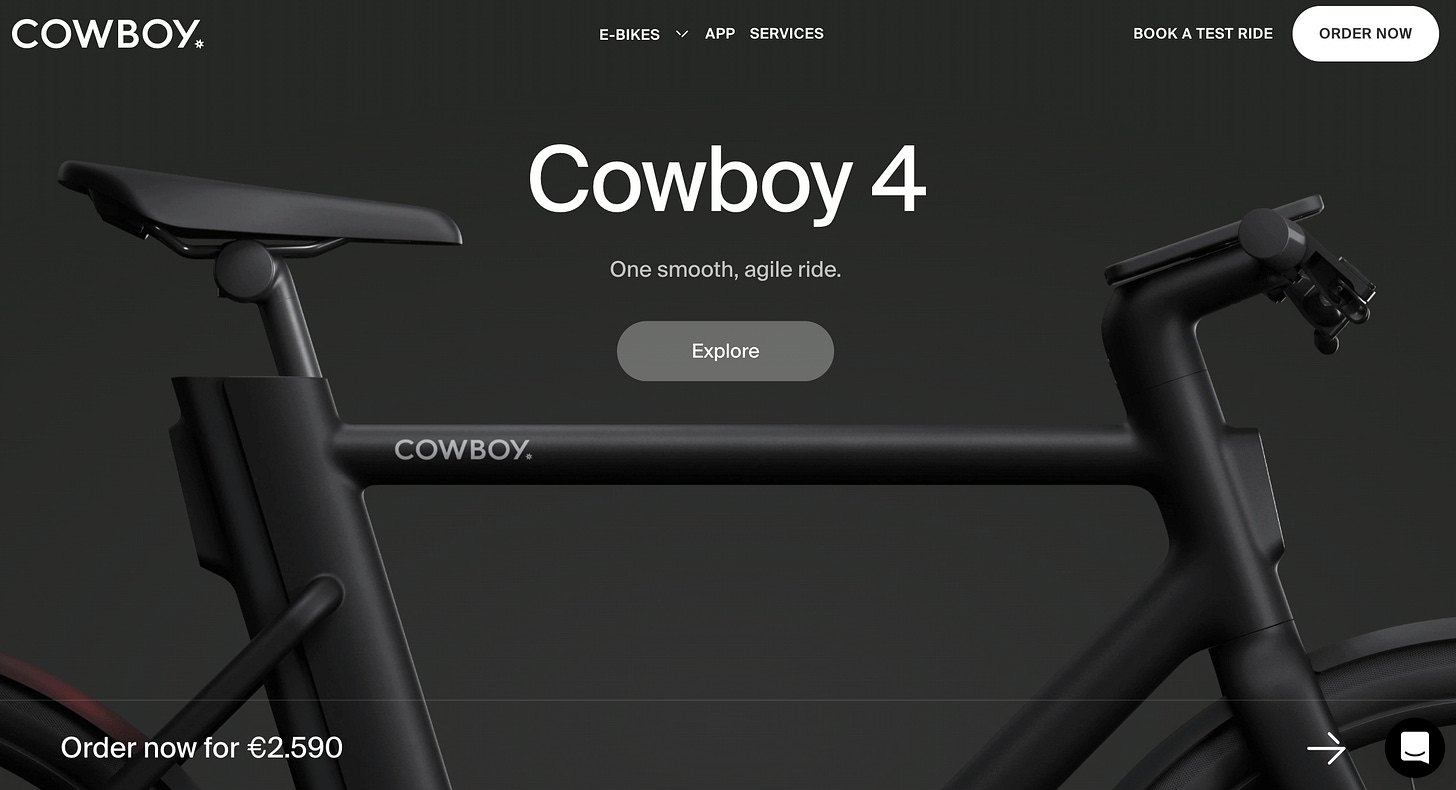I’ve never studied marketing formally per se, but I’ve been practicing it since the mid 90s. Learning as I go. Making the same mistakes too, over and over again.
I deal with technology companies from first Keynote to reaching $10m in ARR - that’s the context for the comments below. And often these companies are under severe pressure to find compelling metrics to justify being future funded by investors - or go bankrupt (sack your team, sell off the furniture, etc.)
Here we go. My advice?
The first thing we do, we kill the word “content.” If the word comes up in a marketing meeting, hit a buzzer on the table and fine the person $10 for saying it. Ingrain it in your culture: liberal use of the word content implies the company is full of copouts incapable of coming up with stories and ideas.
It’s a dangerous, meaningless word that lets you think everything else is important - the technology, the process, the tools. “Just add content,” like it’s a strawberry preserve you can whisk off the shelf to make your bread delicious.
I remember when the word came out after the first internet wave. Programmers were using it to describe everything that was not code when building websites. And in that specific context, I got it.
The problem developed when “content” started to replace something specific, like an idea or a storyline - but it doesn’t. Content doesn’t mean anything. I cannot see content. I cannot feel content. I cannot visualize content. I sit in marketing brainstorms time and time again where the technology and routines of marketing are being discussed as the really important things whilst content was just something you added at the end. And voila! Marketing Magic.
Start with the emotional connections first. The story. The creative. Don’t start with the facts. In building a website, where most consumers experience your brand and your product for the first time, remember that your top priority is to create a subconscious resonance first (no matter how hardcore techie your proposition - trust me on this), then you “make the case” later. You want the digital equivalent of perfume. Almost without exception the entrepreneurs I am dealing with want to make the argument first. The logic. The facts. The FAQ.
Nope.
Hook ‘em with color, photography, a bold headline and a smart font, then confirm their gut instincts with the facts later.
Work with a Persona. Singular. Not Personas, plural. It’s difficult enough to nail one message for one particular person, why make it more complicated by trying to speak to several constituents at once? With marketing, as with so many things, focus is vital to having even a prayer of lighting the fire of a hot first date.
Pick an actual human being on LinkedIn, print out her profile (if you still own a printer) and post it up on the wall for everybody to see. Then flesh out the background. What makes her tick? Where did she come from? What’s likely to move her ahead in the organization? Late 20s? Early 40s? What music does she listen to? UX junkie? Exercise nut? In my opinion, this is where it all starts. Everyone should look up to that person on the wall every day and say, are we enticing her specifically with our creative?
Often we make the mistake of thinking we should address multiple types with different messages - the classic “financial buyer,” “technical buyer,” and “emotional buyer” triangle. I disagree with this thinking today based on hard won experience (read: painful mistakes) although I fully admit I used to preach it.
By speaking to one person, you speak to legions.
Word of mouth is the primary point of your story creation. Will people share your story with other friends at the coffee shop?
If you’re a new company, the story of how and why you came to being is a one-time chance at a unique story (and gives you an emotional advantage over stodgy established players). You get to be corny and share the real motivation behind the team working in the company today. Early adopters like being on the company journey as much as the product journey.
Note: this does not need to be Founder driven. I much prefer team stories to Elon Musk type stories. Reflects better on the Founder too.
I repeat: does your creative inspire people to share the creative? Is it easily repeatable at home, at the bar, in the airport line, at the grocery store, in the parking lot?
I love the Cowboy bike, for example.
We designed the Cowboy bike to appeal specifically to people who are yet to be convinced that electric bikes are a practical and mainstream mode of transport,” says Adrien Roose, Cowboy’s co-founder and CEO. We focused our attention on the three main reasons people are reluctant to purchase electric bikes: high cost, poor design and redundant technology – and then we set about to solve for those issues.
I told my friend Mike about Cowboy last week, apropos of nothing by the way, I just blurted it out in the midst of a conversation about something else entirely:
“Hey, I just found this amazing new electric bike company, Cowboy. Have you heard about it? No? You should check it out, Cowboy.com. Beautiful bike, great app. Clean website.” He’s my creative partner so we often share
I have spent countless early mornings on my laptop researching and comparing electric bikes over the past year.
They’re significant investments. Think $3-5k for your first one. And the landscape’s bewildering at first. You can choose between the hub and mid-drive motors. And then these motors can come with 250 watts, 500 watts, 1000 watts etc. of power. Will you be road biking or dirt biking? Commuting? Range? Weight? These electric bikes will require regular and specialized maintenance so buying from a shop locally that can service and source your bike’s specific drive train is a must. And so on. And so on.
But you know what? I’ve looked far and wide but I keep coming back to the Cowboy. I mean, just look at it:
Handsome, inviting images. Clean layout. Crisp fonts with lots of spacing. Not crowded. I just keep coming back to Cowboy and scrolling further and further down. I’m emotionally hooked. I covet the bike and I’ve never even seen, touched or ridden one.
The only problem? They do not yet deliver to Norway. But I am so entranced, I will wait until they arrive. I’ve emailed them to ask for a timeline. I told them I would be an early adopter. I told them I would consider opening a shop for them. And I will keep telling friends about them.
That is the result of emotion first marketing.
On the subject of website design …
… whilst I have the greatest respect for companies like Wix, Canva, etc …
For God’s sake, invest in a professional graphic designer to design your initial identity framework - the logo, your brand bible, v 1.0 of a website. If you are serious at all about your business, this investment will pay off in spades, promise. Everyone can see through bog standard templated websites for what they are - easy and cheap.
Start with a mood board of imagery (a professional photo shoot well worth the investment), focused language (obsess about the precision of your language as if you are writing for The Economist) and the start of a story. I say “the start of a story” because going live with a website is just the beginning, it’s not a stone tablet. Your story should have multiple chapters. Drip feed it to the market. Do a blog post a week, no more than 700 words is needed. Not only is it good marketing, it’s good management practice to take a step back from day to day and just think a bit about your momentum and, through writing, find new insights.
It’s like a garden. It will take time to see the fruits of your labor but one day you will wake up with a coffee, look out your breakfast room window and say, Holy Shit Honey, look how much the plants have grown! But also, if you stop publishing, all of that work you have done will wither, brown and die. And you cannot plant a fleshy garden overnight. It takes time to nurture it to summer fullness again. So once you have that content momentum running, don’t lose the pace.
Quality over quantity.
Video is hard. Might not be wise to leap into video on day one. But if you do decide it’s time for video be clear on why you are doing video rather than just “video for video’s sake” (file that one under Mistakes I keep Making). I’m really proud of the Marketing 101 work we did at Sensar Marine with video (after experimenting with everything from high end branding video to animation type stuff to overly hacky “authentic” type video etc.) where one of our team (the amazing Henriette) went to visit customers on their boats and talked about the before and after of being a customer. One thing Sensar has achieved? The customers love us. And they are more than happy to take time to show off their boats and talk about SmartBoat One. For free. To support the company on its journey.
Here’s another tip on video - don’t forget the audio quality. Invest in good mics. And get your subtitles right, perfect English, because often audio is by default turned off and people will first experience your video by reading it. But when they do turn on the audio, that investment in mics will make the difference between a hack video and a decent professional grade video.
Which brings us to Social.
I ask myself every day, can I just delete all my accounts and live a normal life again?
If it wasn’t for business necessity, I would deactivate my FB account. And I deleted TikTok from my son’s phone because it felt to me too much like crack cocaine.
Having said this, find somebody who knows their shit because very likely you too have a love hate relationship with Social. And, again, understand why you are doing Social rather than just Social for Social’s sake.
If you’re a hotel, of course you should have a sexy Instagram account. I follow several. Selling IoT devices to Equinor and Dupont? Well, maybe LinkedIn.
I highly recommend you plan, produce and publish in monthly or quarterly cycles rather than wake up every Monday and say to yourself, what should we do on Social this week? Do it ad hoc every week, and it will come across as ad hoc. Schedule a photo shoot for one or two days and then use that imagery for an entire season of social, all posts written and formatted upfront, and then set to be released over the course of 3 months, 1 - 2 per week.
That method I learned from Daniel at Norske Mikrohus and Odin at Norges Miljøforbund (site is Norwegian - think climate activists with teeth) in a fantastic 3 hour content calendar brainstorm where I just shook my head afterwards and said, of course, that’s how it should be done.
Shifting Gears to Data
A good dashboard is key. People like to throw around the word “data” all the time, but, again, like the word “content,” kinda meaningless without specifics. But get yourself one good master dashboard (not multiple) that tracks key topline metrics. And then review and track that dashboard every single day. Set a daily pace to the company, not weekly or monthly. Daily. And even though the dashboard exists somewhere in the cloud, don’t trust that everyone will go and look at it. Clip and paste it into email or a group messaging channel like Slack (not a fan of the Discord interface , yikes, I’m a dinosaur!). Include editorial. I say to the entire company, not just the sales and marketing team. Drive it into the company DNA.
Here compelling UX is a must. I personally love Databox over Google and others. Worth the money.
In the beginning, I like to track a clean Customer Acquisition Cost (CAC) number.
Forget trying to bundle content creation, marketing staff, etc. into that number. Just cost of media, cost of advertising. It costs me, say, $1k in LinkedIn ads to drive 200 visitors to my website - the average global Cost Per Click (CPC) is indeed around $5 - and I converted 2% of those into an action, be it registering for a newsletter or asking for a demo or actually buying a product (whatever action you are trying to track).
Then map that against a projected Lifetime Value (LTV) of that customer to get proper financial perspective.
$1k CAC to drive $100,000 in LTV? Bravo! $1k CAC to drive $1000 LTV? Well, actually, don’t panic, might not be bad in the very early days - you decide with your investors.
ReMarkable, I have heard, first paid nearly $1k for a customer to pay $600 for their digital tablet product. They celebrated in fact when they were “only” paying $600 for their customers as a major milestone (years into their marketing efforts). And now? This company is one of Norway’s major homegrown logic defying category creating global success stories. This type of brute force commitment requires significant funding though, of course.
CAC payback is also key. Does it take 2 years or 2 months to pay back your CAC from the revenue (or gross margin)? In software companies, you might have $0 signup and a monthly subscription fee, for example. If CAC is less than a year, you’re rocking, you’ve joined the league of the fastest growing SaaS companies.
I know investors focused on this particular metric above all others.
I hear early stage companies talking about profit and I just scratch my arm and mumble WTF in my seat. We’re trying to establish the growth metrics of the company here. Forget profit for now. Nail the growth metrics and profit will naturally follow. And by the way, we just launched 18 months ago!
Another key metric I like to track is the organic vs paid ratio. You’re likely going to start high on the paid side but ideally you want to see organic take over. There is no rule of thumb here that can be intelligently applied. Look at relevant comparables for your industry and stage. With a newly launched company I worked with recently, we set a goal to have organic overtake paid by end of year two (and this of course is related to a whole host of other factors I cannot cover here).
But have a goal here! That’s the point.
Rig yourself from day one to track “refer a friend” type traffic. Perhaps you’re asking “how did you hear about us” when they register for your newsletter or a product. And as much as possible, drive your business towards word of mouth against all other sources (FB, Google, etc). Attribution of course is not always so cut and dried but do your best.
Metrics will land us further investment for growth - and, believe it or not, there are many metrics other than just the holy grail of topline revenue that can signal you have the makings of success. Identify them, track them. Set targets. Miss those targets. Exceed those targets. Ask why. Make bold moves.
Serious Growth Requires Serious Funding
This might seem super obvious from the outside, but, in early stage, I feel this simple reality is often forgotten. By absolutely everyone involved - investors, board members and the team.
I see companies all the time where the vast majority of the resources are pointed towards building, maintaining and improving tech and a negligent amount towards selling and marketing it - negligent in relation to the “global ambition” founders often espouse.
I see pie charts where $5m has been invested in the company to date and 70% went to tech, 15% to admin, 15% to selling and marketing. And we wonder why sales are disappointing?
Marketing requires a company wide mindset and focus, just as much as tech commands.
Marketing for serious growth requires serious funding. The average Series A in Europe has nearly doubled in the past 5 years to €11.4. Here in Norway we can talk of a €3m round as a growth round. Here Norway is winning no gold medals.









Great reading as always. Really enjoyed this information with my sunday coffee. Looking forward for more to come.
Love ALL of this!!! ♥️👏👏👏 Such great advice, and so rarely said in the tech world.